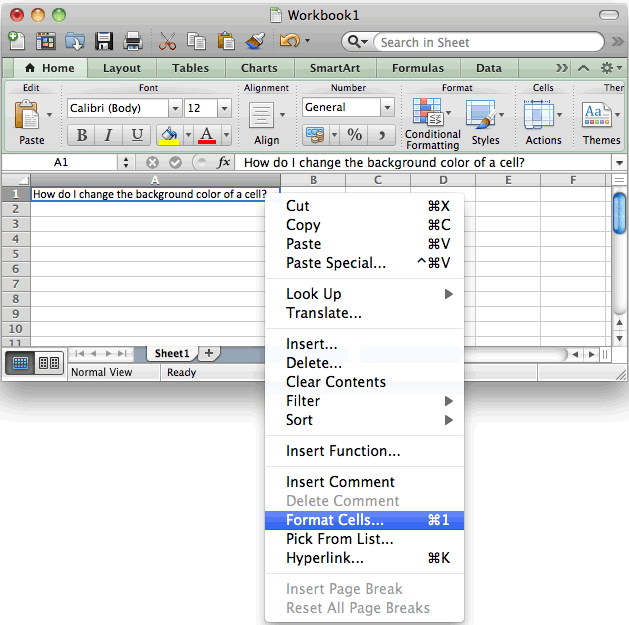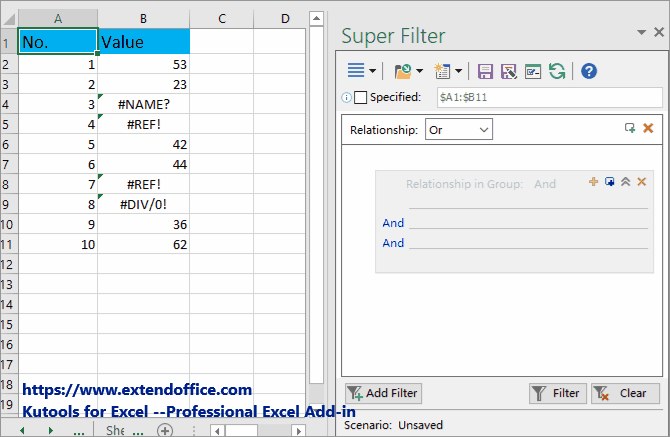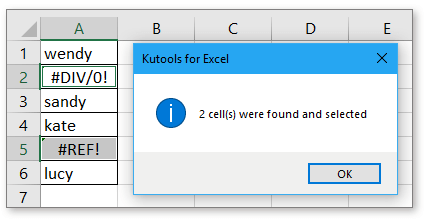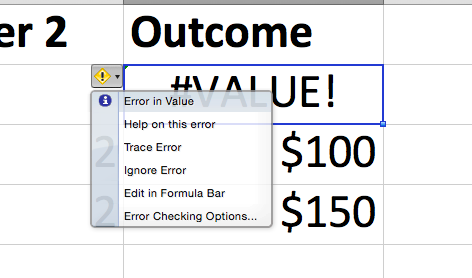

Blank rows will be sorted at the bottom of the selected range (indicated by colored rows in the screenshot below). Here you can select either the Sort A to Z or Sort Z to A button to sort in ascending or descending order. Select the range of rows in the spreadsheet. A simple sort will bunch all blank rows together and help you quickly remove them. Sorting your data will not only help to organize your data but this can also bring out blank rows you do not need. Use a simple sort to find and remove blank rows in Excel
EXCEL FOR MAC CLEAR ERROR CELLS UPDATE
The row numbers will also update to stay in sequence. Those rows below the deleted ones will be moved up to replace the deleted space.

When there are a small number of rows, you can quickly spot the blank rows and remove them with a selection.
EXCEL FOR MAC CLEAR ERROR CELLS TRIAL
Microsoft Office Excel recalculates the worksheet with the last values that are found for the decision variable cells, and displays the Show Trial Solution dialog. You can interrupt the solution process by pressing ESC.If you click Cancel, other selections in the Solver Results dialog box (such as Keep Solver Solution and any selected reports) are ignored the original values of the decision variable cells are restored, and Solver returns to Excel worksheet mode.If you click OK, Solver re-displays the Solver Parameters dialog if you selected the above check box otherwise it returns to Excel worksheet mode.Select the Return to Solver Parameters Dialog check box if you want to modify the Solver model or re-solve as your next step. To restore the values of the decision variable cells at the time you clicked Solve, click Restore Original Values.To keep the final values in the decision variable cells, click Keep Solver Solution.After reading these messages, do one of the following: Click Solve and in the Solver Results dialog box, read the message at the top and the more detailed explanation at the bottom of this dialog.If you define a >= constraint that specifies a lower bound different from zero for certain decision variable cells, it will take precedence over this option for those cells. Select the Make Unconstrained Variables Non-Negative check box to specify that all decision variable cells without explicit lower bounds should be given lower bounds of zero.In the Subject to the Constraints box, enter any constraints that you want to apply.You can specify up to 200 variable cells. To have an effect, the variable cells must be related directly or indirectly to the objective cell, or to the cell reference in at least one constraint. Separate the nonadjacent references with commas. In the By Changing Variable Cells box, enter a name or reference for each decision variable cell.Using the Value Of option has the same effect as defining a constraint (see below) where the objective cell must be equal to the specified value. In this case Solver finds values for the decision variables that satisfy the constraints. You may leave the Set Objective box empty. If you want the objective cell to be a certain value, click Value Of, and then type the value in the box.If you want the value of the objective cell to be as small as possible, click Min.If you want the value of the objective cell to be as large as possible, click Max.The objective cell must contain a formula.


If you don't see it, you need to insert the Solver App. In the Excel Web App, the Solver Parameters dialog should be visible on the worksheet. If you don't see the Solver command (on the Data tab on Windows, or the Tools menu on Macintosh), you need to load the Solver Add-in. You can resize this dialog by selecting its lower right corner and dragging.


 0 kommentar(er)
0 kommentar(er)
